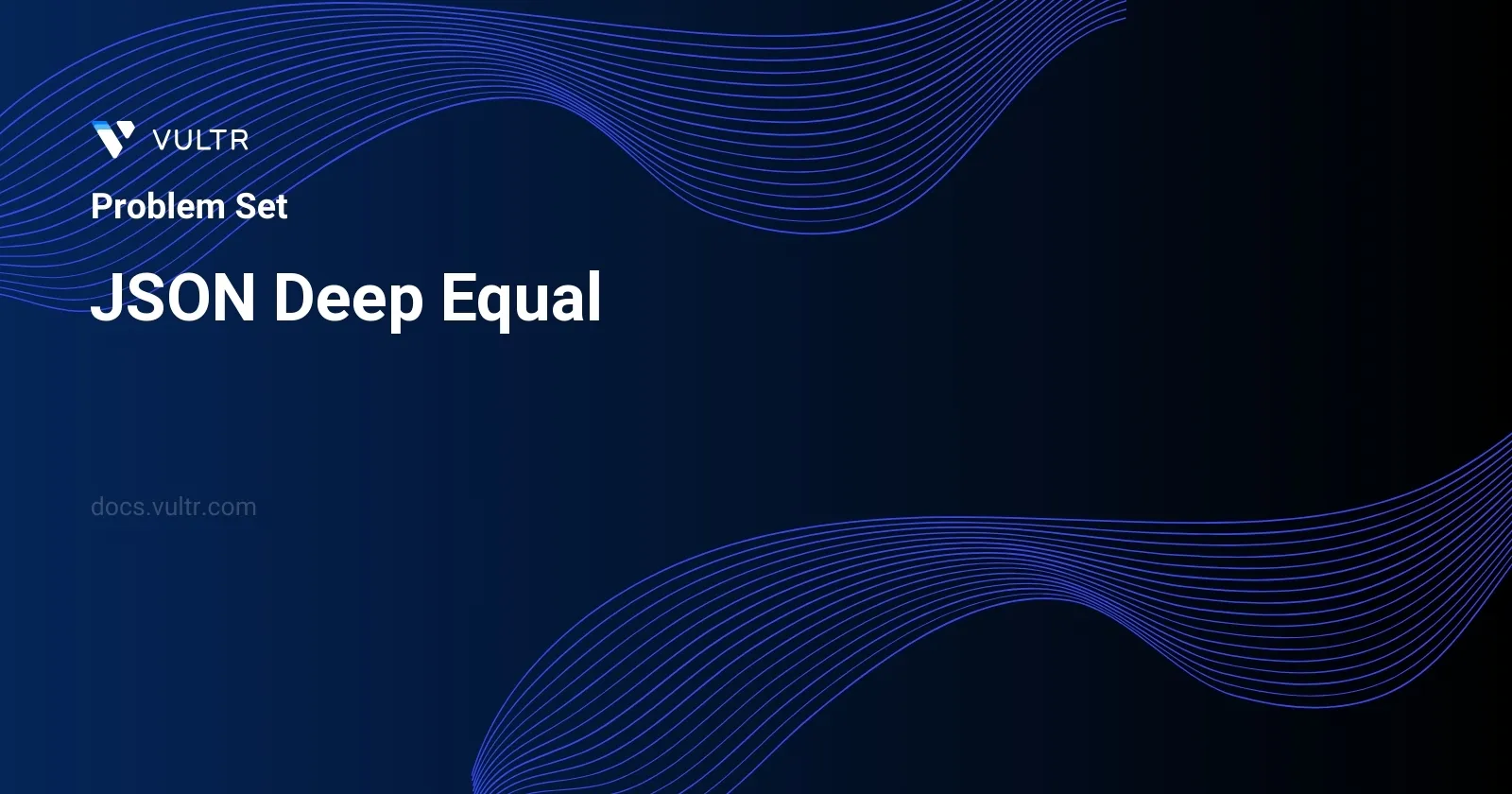
Problem Statement
Given two values o1 and o2, you are tasked to determine if these two values are deeply equal. The term "deeply equal" necessitates adherence to specific conditions based on the type and structure of the inputs:
- When
o1ando2are primitive values, they are deeply equal if they are strictly equal (using the===operator in programming terms). - In the case that
o1ando2are arrays, they must have identical elements arranged in the same sequence, and each of these elements must recursively meet the deep equality conditions. - If
o1ando2are objects, they are considered deeply equal if they possess identical sets of keys, with values for each key recursively satisfying the deep equality conditions.
The provided values o1 and o2 are assumed to be valid JSON objects, meaning they are structured data that can be represented as stringified JSON. This problem must be solved without utilizing any external library functions like lodash's _.isEqual() to compare the objects or arrays deeply.
Examples
Example 1
Input:
o1 = {"x":1,"y":2}, o2 = {"x":1,"y":2}Output:
true
Explanation:
The keys and values match exactly.
Example 2
Input:
o1 = {"y":2,"x":1}, o2 = {"x":1,"y":2}Output:
true
Explanation:
Although the keys are in a different order, they still match exactly.
Example 3
Input:
o1 = {"x":null,"L":[1,2,3]}, o2 = {"x":null,"L":["1","2","3"]}Output:
false
Explanation:
The array of numbers is different from the array of strings.
Example 4
Input:
o1 = true, o2 = false
Output:
false
Explanation:
true !== false
Constraints
1 <= JSON.stringify(o1).length <= 10^51 <= JSON.stringify(o2).length <= 10^5maxNestingDepth <= 1000
Approach and Intuition
To address this challenge, a recursive approach can be very effective. Employing recursion makes it viable to determine deep equality across nested structures like arrays and objects, which can have other arrays or objects as their elements or properties.
Understanding Required Conditions
Primitive Type Comparison: Use strict equality
===to compare both value and type.Array Comparison: Check both are arrays with the same length. Recursively verify each element.
Object Comparison: Ensure both are objects (and not
null). Verify they have the same set of keys. Recursively validate each key-value pair.
Step-by-Step Recursive Approach
If both are
null, returntrue.If types differ, return
false.If both are arrays:
- Compare lengths.
- Recursively compare corresponding elements.
If both are objects:
- Check keys for equality in both length and content.
- Recursively compare values for each key.
For all other types (primitives), use
===.
This recursive strategy is optimal given the constraints, and handles deeply nested structures effectively up to the maximum allowed depth.
Solutions
- JavaScript
function sortObjectFields(key, val) {
if (val && typeof val === "object" && !Array.isArray(val))
return Object.fromEntries(Object.entries(val).sort());
else
return val;
}
var deepEqualityCheck = function(obj1, obj2) {
const obj1Stringified = JSON.stringify(obj1, sortObjectFields);
const obj2Stringified = JSON.stringify(obj2, sortObjectFields);
return obj1Stringified === obj2Stringified;
};
The "JSON Deep Equal" solution in JavaScript effectively compares two JSON objects for deep equality. This process involves checking whether every corresponding property and value pair in obj1 matches those in obj2, accounting also for differences in property order in nested objects.
- The code introduces a
sortObjectFieldsfunction, designed to sort the properties of an object should that object is not an array but a JSON object. This function ensures that when converted to a string, the property order won't affect the equality check. - The main function,
deepEqualityCheck, utilizes JSON.stringify with a replacer function (sortObjectFields). This guarantees consistent ordering of object properties during string conversion. - Both JSON objects (
obj1andobj2) are converted into string representations with consistently ordered properties and then compared for equality.
This method of deep equality checking is particularly useful when you need to verify that two JSON objects represent the same data structure in contexts where property order might vary but should not influence the equality assessment.